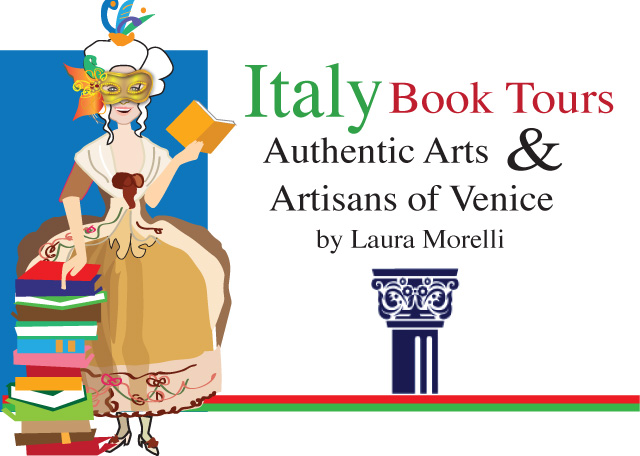
Ciao tutti! Oggi metto in evidenza due libri di Laura Morelli in un nuovo virtual book tour di Laura Fabiani. I libri sono “Authentic Arts: Venice, A Travel Guide to Murano Glass, Carnival Masks, Gondolas, Lace, Paper & More” e “Artisans of Venice”. Sono anche molto felice di essere in grado di presentarvi un’intervista che ho condotto con l’autore!
Ciao friends! Today I am spotlighting two books by Laura Morelli in a new virtual book by Laura Fabiani. The books are “Authentic Arts: Venice, A Travel Guide to Murano Glass, Carnival Masks, Gondolas, Lace, Paper & More” and “Artisans of Venice”. I am also thrilled to be able to present to you an interview that I conducted with the author!
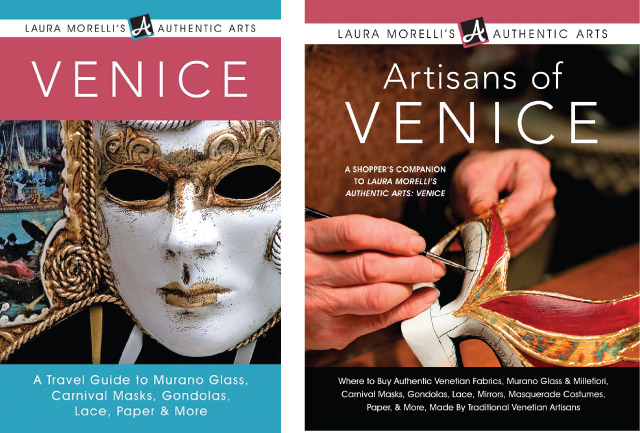
Laura Morelli è una storica d’arte presso l’università di Yale. Forse ricorderete una recensione che ho pubblicato prima del suo romanzo “The Gondola Maker”. Laura è un’esperta della storia di Venezia, pittura e artefatti. Lei è anche una guida di fiducia nel mondo dei viaggi culturali e shopping autentico a Venezia. Ha messo insieme tutta la sua conoscenza della materia in due libri per aiutarci a trovare i tesori più autentici e originali che Venezia può offrire.
Laura Morelli is an Art Historian from Yale University. You may recall my mentioning her in a previous post in which I reviewed Morelli’s novel“The Gondola Maker”. Laura is an expert on Venetian History, painting, and artifacts. She is also a trusted guide in the world of cultural travel and authentic shopping. She has compiled this knowledge into two companion books to make sure that you’ll come home from Italy with the best of Venice in your suitcase.
For a chance to win a set of Morelli’s books along with two authentic Carnival masks (one male Bauta style and one female Colombina style) Scroll to the bottom of the blog post to enter the Rafflecopter Giveaway.
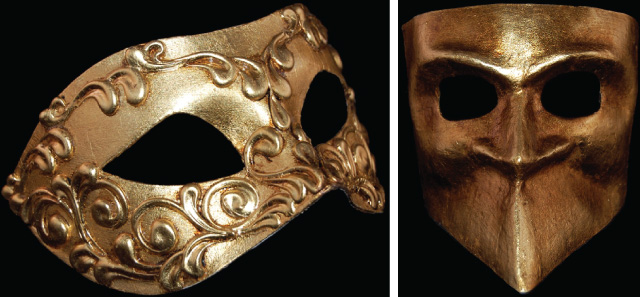
See below for a description of the masks. Read more about the masks and la commedia dell’arte here on the blog in a post called Ti conosco, mascherina:
In un’intervista recente ho chiesto Laura della sua passione per l’Italia, Venezia e la lingua. È stato un piacere ricevere le sue risposte alle mie domande e sono felice di condividere la nostra conversazione con tutti voi.
In a recent interview, I asked Laura about her love for Italy, Venice, and the Italian language. It was a delight to receive her responses to my questions and am happy to share our conversation with all of you.

Ciao Laura e benvenuta al Matta Blog! È mio piacere diffondere la notizia dei tuoi libri. Sono anche contentissima di avere l’opportunità di farti alcune domande. Cominciamo!
Ciao Laura e welcome to the Matta blog! It is my pleasure to spread the news of your books. I am also delighted to have the opportunity to ask you some questions. Let’s get started!
La matta: What first sparked your interest in Italy and Venice?
Laura: I have been fortunate to live in Italy and to travel all over the country, but Venice holds a special place in my heart. If you described Venice to someone who had no prior knowledge of it, they might think you were making it up. It’s mind-boggling to think that the entire built environment of Venice–everything from the humblest coffee shop to the grandest church–stands atop thousands of wooden pilings driven into the mud centuries ago. The city has been described as “impossible,” and I think that’s a good way to capture its essence.
La matta: When did you first travel to Italy?
Laura: The first time I visited Venice as a wide-eyed teenager, I knew I was supposed to buy Murano glass, but I had no idea why. All I knew was that I was whisked to the famous “glass island” on an overcrowded, stinky boat. I waited behind two dozen American and Japanese tourists to pay an exorbitant price for a little glass fish—what a bewildering experience!
La matta: When did you decide to become an art historian? What inspired you along this path?
Laura: In spite of my Murano glass-buying fiasco, my travels and the artistic traditions of the past lured me back to Italy and inspired me to study art history. One of my art professors in college gave a lecture about her research on a French painter, and I was totally riveted. I thought, “you mean you can really do that as a career?!” By my senior year in college, I had decided that I would go on to pursue advanced degrees in art history, and would teach at the university level. I always had the idea that I would write books, and I had dreamt of writing a novel for as long as I can remember.
In the course of my studies, naturally, I studied the great Italian artists of the past—Leonardo da Vinci, Michelangelo, Tintoretto, the Lorenzetti, Modigliani, Balla, and others. But later, having the opportunity to live in Europe and Latin America, I realized that in many places, centuries-old craft traditions are still living traditions. So began my quest to discover craftspeople passing on a special kind of knowledge to the next generation. I never tire of the stories and the people behind the world’s most enduring artistic traditions—everything from Murano glass to Limoges porcelain, balsamic vinegar, Chinese silk, and cowboy boots. Today, my mission is to lead travelers beyond the tourist traps to discover authentic local traditions and artists and come home with great treasures in their suitcases. My focus in on cultural immersion through a greater appreciation of art objects and the people who make them.
La matta: Do you have a favorite memory or funny story to tell about when you first started learning the Italian language?
Laura: When I moved to Italy, I was pregnant with my first child. I planned to give birth in a hospital with a reputation for natural childbirth, so my motivation to become fluent in Italian was extremely high! I had studied Italian in college, but I spent the last few months of my pregnancy sitting across a table from an Italian teacher in a language school in Monza. The first day, I told her, “I need to learn everything right now.” In this one-on-one setting, we flew through the language books. I also waddled around town, practicing as much as I could. Italians are so kind to pregnant women that I got not only language practice but lots of free treats, gelati, even bottles of wine and flowers bestowed upon me! By the time my son was born, I could say just about anything.
La matta: What are some of your favorite Italian words?
Laura: It took me the longest time to pronounce the Italian word for “spoon,” cucchiaio. It made my Italian teacher crack up every time I tried to say it! Italian is full of vivid expressions and sayings. Che dramma napoletano, accompanied by an appropriate hand gesture, is the most fantastic phrase anyone has ever invented.
Grazie Laura! Che bello conoscerti meglio! Mi piacciono le tue riposte. I certainly enjoyed reading your novel based in Venice “The Gondola Maker” and look forward to checking out your Travel Guides “Authentic Arts” and “Artisans of Venice”.
Where to buy the book:
Amazon: Artisans of Venice
To read more reviews for Laura Morelli’s Virtual Book Tour this week click here: Tour Schedule for Authentic Arts: VENICE Travel Guide
Descriptions of the masks
The baùta or baùtta: The baùta is the quintessential Venetian mask, worn historically not only at Carnival time but any time a Venetian citizen wished to remain anonymous, such as when he may have been involved in important law-making or political processes in the city. The simplest of the traditional Venetian mask types, the baùta is a stark faceplate traditionally paired with a full-length black or red hooded cloak called a tabàro (or tabàrro), and a tricorn hat, as depicted in paintings and prints by the Venetian artist Pietro Longhi. Most baùte were made of waxed papier-mâché and covered most of the face. The most prominent feature is a distinctive aquiline nose and no mouth. The lower part of the mask protruded outward to allow the mask wearer to breathe, talk, and eat while remaining disguised.
Colombina: In the Commedia dell’Arte, Colombina played the role of maidservant. The Colombina is a half-mask that covers the forehead down to the cheeks, but leaves the mouth revealed. Originally, it would have been held up to the face by a baton in the hand. The Colombina is often decorated with more feminine flourishes, from gilding to gems and feathers, but both men and women may wear it.
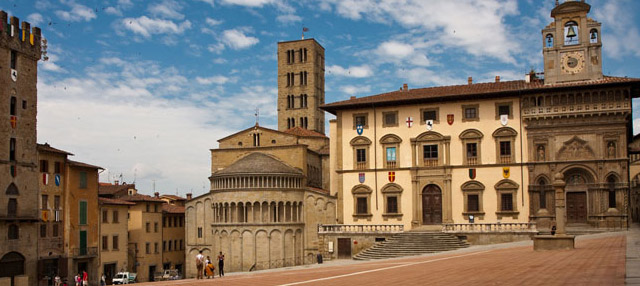


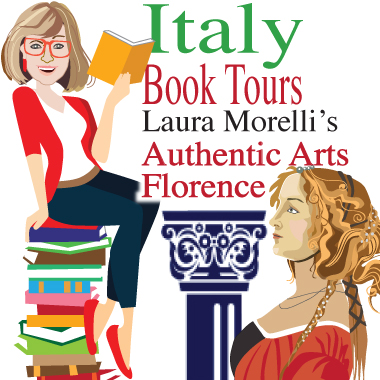

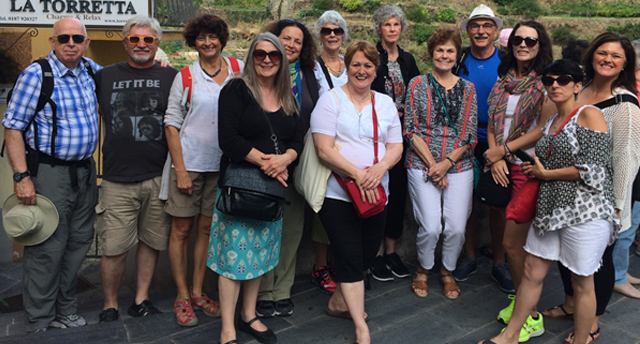






I went to Venice once with my husband. We renews our wedding vows while touring in a gondola. There was the singer and the accordionist with us. I have pictures of all the places visited like murano glass, the mask artists.. I will never forget this trip!
Grazie mille, Melissa! 🙂
Ciao Laura!
I too am enamored with Venetians masks! I received my Masters in Italian from Middlebury College and did a concentration in Carlo Goldoni and La Commedia dell’Arte. I love all the costumes and maschere and each year try to recreate it with my little students as Carnevale rolls around. I have been to Carnevale di Venezia once and now dream of taking my two daughters one day. I would love to hear more about your tours.
Grazie!
Carolina